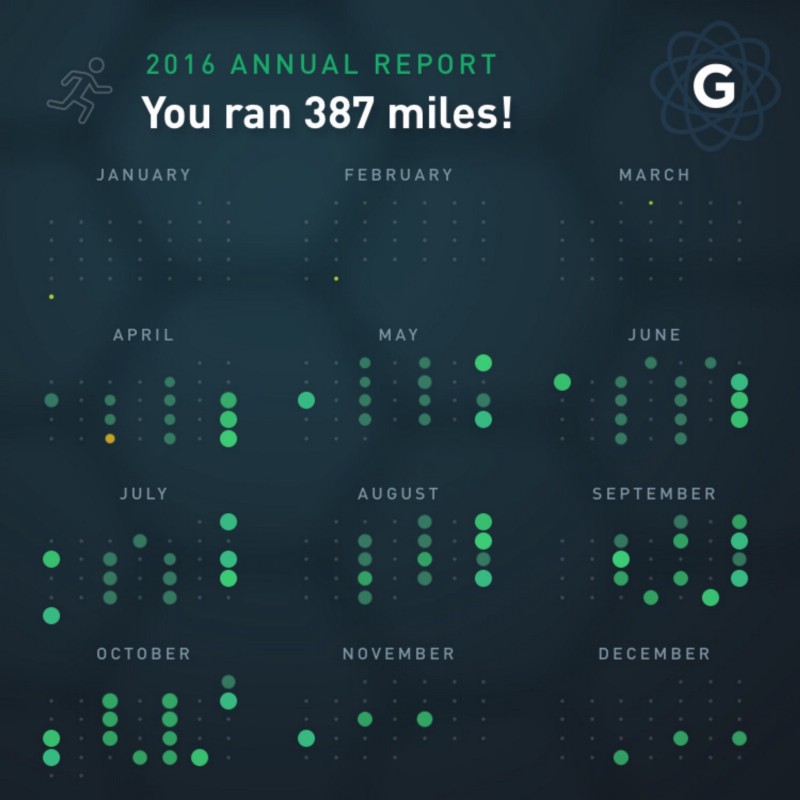Losing 70+ pounds over a year
Growing up, I never thought I’d be the one giving fitness advice to anyone. I do not remember a point in my life when I wasn’t overweight— I would usually be the last person picked for team sports, have made excuses to drop out of activities like skydiving or swimming, and in general, was desperate to reduce my bodyfat for many years before I found out what worked for me. I wrote this little piece for those in the same boat as I was a year ago. I am a 26 year old male living in San Francisco who went from 242 lbs, 32.8 BMI to 168 lbs, 22.8 BMI over ~12 months by bringing together weightlifting, running, and the slow-carb diet. But this is not a post about the specifics of these — instead, I want to share the deeper lessons that, in retrospect, actually made these work.

I. The Ridiculously Easy Keystone Habit: Start Lifting
Losing weight is a confluence of a number of habit changes. You have to realize that although your entire lifestyle has to change, you cannot do it all in one go. It may take many months of experimentation for you to find your rhythm and get settled into your new lifestyle. But it all starts with picking up a ridiculously easy keystone habit.
By focusing on one pattern — what is known as a “keystone habit” — you can teach yourself how to reprogram the other routines in your life, as well.
—Charles Duhigg, The Power of Habit
These habits that are more powerful than others, called keystone habits, start a cascade effect on everything else on your life. Picking up some form of exercise is usually the most oft-cited example — as soon as you start exercising, you automatically want to eat better, sleep better, and in general take care of yourself.
It helps if this keystone habit you pick up is so ridiculously easy that it’s almost too hard to come up with an excuse to not follow through. My ridiculously easy keystone habit was the Stronglifts’ 5x5 weight training workout.
In December 2015 (242 lbs), one of my really good friends introduced me to the 5x5 workout for weight training. It may sound pretty non-intuitive, but amongst any exercise regimens I’ve ever tried, this is the easiest to start off with — there are only 5 exercises you have to learn, you have to go to the gym 3 times a week for about 45 minutes, and you start off each exercise with an empty barbell (it’s ridiculously easy to start!). There’s a free app that tells you what to do next taking the thinking part out of it, and the comprehensive guides on Stronglifts.com help make sure you’re doing these exercises right.
One small note — everybody in the gym is there because they want to improve themselves, and everybody starts somewhere and is always looking up to the next version of themselves. It may be a little embarrassing to start squatting an empty barbell when there’s someone else doing the same with 300 lbs, but you really have to check your ego at the door when you enter the gym. Losing weight is an exercise in humility, and you’ll have to adopt a growth mindset and trust that given enough time, patience and consistency, you’ll get there as well.
Takeaway: If you want to start weight training and don’t have a clue, take my word and spend a couple of hours reading everything (or at least some things) on Stronglifts.com. This was the ridiculously simple keystone habit that started the cascade effect of good habits for me, and although I know some of you may be averse to lifting, you have to at least open Stronglifts.com and read the FAQ!
II. Pick an audacious goal: Run a Half Marathon
In April 2016 (236 lbs), three months after I had started the 5x5 workout, I had lost about 6 lbs of weight. I knew I needed to do more, and that losing fat is mostly about adopting a better diet and doing cardio. The problem: I hate doing any cardio in the gym since it usually gets too hot and stuffy for me. Around this time I came across this New York Times article: How To Start Running, and I cannot thank the author enough for effectively introducing me to a form of cardio that I actually love. Top takeaways:
- First pick a race: In April 2016, I gave myself 4 months to train for the San Francisco Half Marathon held near the end of July. That’s, couch to 13 miles in 4 months. It’s good to have an audacious goal, and it’s absolutely necessary for you to put down that non-refundable fee and make a concrete mental commitment to go through the distance. I like “finishing a long distance race” as a goal since whether you finish or not is very binary and very public. You can’t make excuses, unlike other metrics.
- Run outside: Running outside is much easier than running on a treadmill. You get some fresh air, you get to see other people, your brain is distracted on planning the route as lights change, and you’re not as stuffy as you would be in an indoor gym. Also, a protip: try light podcasts or audiobooks to distract yourself.
- The Walk-Run Method: To get better at running, start with a 90 second run, followed by a 30 second walk, and keep alternating. If you can’t do this, it’s okay to walk the entire distance. Heck, it’s also okay to crawl if you have to in the end — but it’s about going through the distance you set for yourself. Forget the time and pace — that’s not for beginners.
Takeaway: The best cardio workout for you is the one that you actually end up doing. Running outside is the only cardio I happily look forward to. Also, if you don’t chuckle a little to yourself when you pick your audacious goal, it’s not audacious enough.

III. Compliance, Discipline, Patience: The Slow Carb Diet
Another thing that I started in parallel in March 2016 was the Slow Carb Diet that a lot of you may have read about somewhere on the web. I list this last, but this one was definitely the hardest to follow, as well as the most important component of fat loss for me. Tim Ferriss introduced the Slow Carb Diet in his book The 4-Hour Body, and although it’s not radically new, I think Tim’s genius lies in realizing that it is the easiest diet to stick to compared to any other low-carb plan. There are a bunch of summaries around the web, but when I read the book a long time ago, I made some notes and put them up here. Two reasons I like it:
- You don’t count calories — just change your default foods. If you’re hungry, it means you forgot to eat enough, and you’re doing it wrong. Fat loss is not about starving yourself.
- **You get a cheat day every week **— this is critical to keep you sane. Keep a list of everything that tempts you over the week, and go eat everything on that list on your Saturday. #carbheaven.
Read the summary of the diet here, and follow it to the letter. This is important. You have to go all in for 6 days a week and make no excuses, or this won’t work. You’ll be tempted to abandon this diet, or abandon getting fit altogether. You’ll hit plateaus every few months, but despite that, I saw a consistent net 1.5 lbs per week loss for a whole year (which includes ~0.5 lb a week lean muscle gain from 5x5, so almost 2lbs of fat loss per week!)
One small note — The Big Sugar industry (think Coca Cola, Pepsi etc.) is no better than the Big Tobacco industry of yesteryears. To lose fat, you have to eliminate white carbs aka sugars, not fat. The Big Sugar doesn’t want you to know this and exploits the gullibility of people who think that they need to cut fat from their diet to lose fat. At the risk of sounding like a conspiracy theorist, you should read how FDA has been a big complicit in concretizing this perception in people’s minds. In short, just remember that anything marketed as healthy because it is “fat-free”, but is loaded up with sugars is not healthy. (Update 3/12/2018: Was glad to see NYTimes use the Big Sugar term.)
Takeaway: Compliance can be engineered. It’s good to have discipline in life. Things take time, so patience is key.

What’s next?
I never set a goal weight and although I’m probably more fit than most of my friends and that should be good enough, but good enough is the enemy of the best. Every point in time I ask myself if this is the best possible version of me, and if the answer is no, there’s no reason for me to stop here. I’m training to run my first full marathon in October later this year, and I’ll keep researching and modifying my diet and workout routines over time to better suit that.
Also, keep in mind that this is just one data point, one story amongst millions of people who have lost significant weight at some point of time in their lives. There’s no one regimen that is correct or optimum. It all depends on you, your situation and your lifestyle. Don’t expect someone to write something that will work perfectly for you — you’ll actively have to do all you can to research what works best, and constantly iterate, calibrate and think about what you can do next to make yourself better. I’d like to end this with a story I saw in Charles Duhigg’s book, The Power of Habit:
There are these two young fish swimming along and they happen to meet an older fish swimming the other way, who nods at them and says ‘Morning, boys. How’s the water?’
And the two young fish swim on for a bit, and then eventually one of them looks over at the other and goes ‘What the hell is water?’
The water is habits, the unthinking choices and invisible decisions that surround us every day — and which, just by looking at them, become visible again. Design some good habits for yourself if you want to become fit — no one else will do it for you.